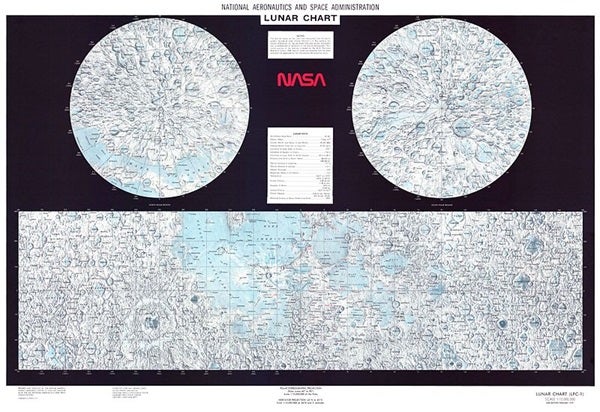In 1961, Commission 16 of the International Astronomical Union determined that there should be two types of lunar maps: those intended for exploration (think astronauts) and those intended for use at the telescope. The first type labels east in the same direction as Mare Crisium (Sea of Crises). As we gaze at the Moon when it lies highest in the south, that feature lies near the right edge. So, for the past 57 years and on into the future, east is to the right, just as all terrestrial maps label it.
The second type, telescopic maps, show south up, as it would be in a telescope that inverts the image. This type of map doesn’t carry any “east” or “west” directions.
The direction east is to the right on maps of all other objects in the solar system except one: the Sun. For whatever reason, astronomers have never changed the convention of labeling directions on the face of our daytime star. This means that, for maps dated post-1961, the Sun is the only solar system body on which a “north up” map will have east to the left.
Senior Editor










